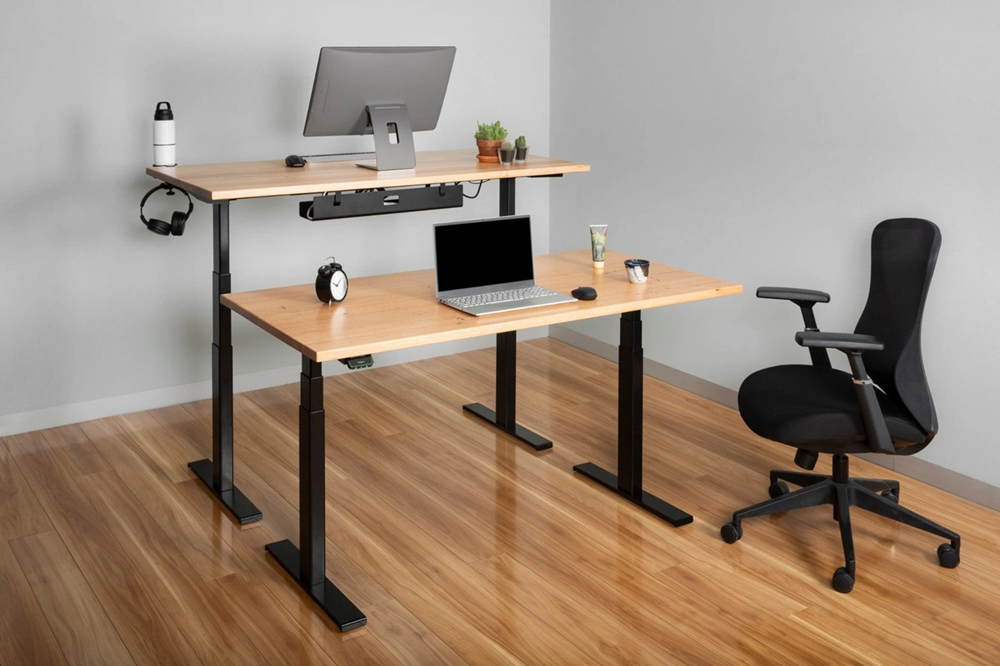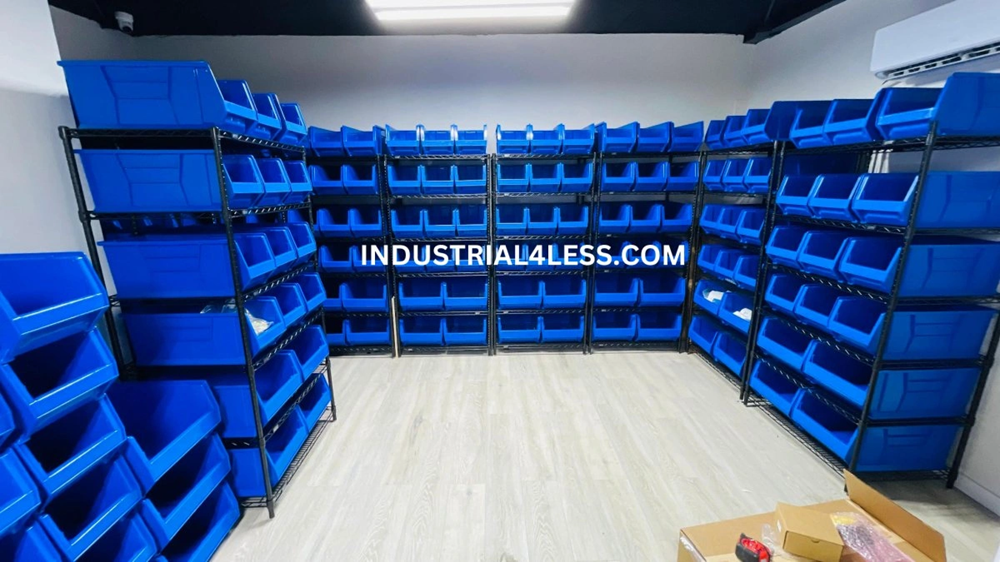
Here’s a surprising fact – Oklahoma’s small town of Wagoner produces about half of all shopping carts in the United States.
Most retailers use shopping carts that are 37 inches tall and 20 inches wide. The size varies based on the store type. Walmart’s carts hold 212 liters, while Costco’s carts can fit up to 250 liters. These size differences come from careful business planning.
Bigger shopping carts lead to more sales because customers tend to fill up the extra space. This works really well in stores that sell small items like makeup or food, where basket size can change how much people buy.
Retailers need to think about these dimensions and their effect on customer behavior before placing big cart orders. Each store type needs its cart size – supermarkets use large 150-240 liter carts for weekly family shopping, while warehouse clubs need even bigger ones for bulk purchases.
This piece will help store owners pick the right shopping cart dimensions that match their business needs perfectly.
Understand Standard Shopping Cart Dimensions
Shopping carts come in all sizes to fit different retail stores and meet customer needs. The right dimensions play a vital role in making smart buying decisions, especially for bulk orders.
What are standard shopping cart dimensions?
Standard shopping carts follow exact specs that work well in any retail setting. A typical full-size grocery cart is 21.5 inches wide, 38-39 inches high, and 36 inches long. These measurements help carts move easily through store aisles while holding plenty of items.
Today’s carts need specific measurements to work their best. The handle width runs from 18 to 25 inches, which fits most adults’ grip comfortably. The basket depth ranges from 20-24 inches, giving enough room for products of different sizes.
A standard cart weighs about 49-51 pounds. This makes it stable when full but easy enough for staff to move. When stacked together, each cart takes up 8 to 13 inches of space. Stores can store many carts without taking up too much room.
Average shopping cart dimensions in cm and inches
Here’s how the standard measurements look in both systems:
| Dimension | Imperial (inches) | Metric (cm) |
|---|---|---|
| Width | 21.5-25.5 | 54.6-64.8 |
| Height | 38-42 | 96.5-106.7 |
| Length | 36-43.75 | 91.4-111.1 |
The standard Model #200 grocery cart that supermarkets use holds 8,548 cubic inches (140 liters) in its top basket and 11,688 cubic inches (191.5 liters) total. Warehouse club carts offer much more space – Sam’s Club’s carts hold 15,548 cubic inches, making them 500 cubic inches bigger than other stores’ carts.
Different stores pick cart sizes that match their business needs. Warehouse stores like Costco use carts with taller handles (45 inches from the ground) compared to regular grocery stores. Small retailers like Dollar Tree have carts that hold just 6,720 cubic inches – less than half of what Sam’s Club carts can carry.
How dimensions affect customer behavior
Cart dimensions shape how people shop and what they buy. Research shows bigger carts make customers buy more than they planned.Empty space makes shoppers feel like they haven’t finished shopping yet.
People with lots of cart space tend to keep looking around and add items they didn’t plan to buy. An empty-looking cart creates a subtle feeling that makes people want to fill it up.
Each store’s cart size should fit its market and products. Stores selling bulk items need extra-large carts because their customers usually buy more. Small boutiques selling expensive items in smaller quantities might do better with compact, stylish carts.
Handle height makes a big difference in customer comfort and shopping time. Costco’s 45-inch handles make most people reach up slightly. Other big retailers put their handles 38-42 inches from the ground to work well for customers of different heights.
Research shows that good carts with the right dimensions help decide where people shop and how much money they spend. Smart retailers see their carts as tools to boost sales rather than just another cost.
Match Cart Size to Store and Product Needs
The right shopping cart dimensions depend on your retail environment’s specific needs. A well-sized cart will give customers an uninterrupted shopping experience and boost sales through better capacity.
Choosing based on product types and volume
Your store’s merchandise should shape your cart selection. Big supermarkets and warehouse-style retailers need carts with 15,000 cubic inches or more capacity for bulk items. Sam’s Club provides carts with roughly 15,548 cubic inches of storage—500 cubic inches more than their competitors.
Shoppers might feel overwhelmed by large carts in stores with smaller items. Here are some product-specific guidelines:
- Small vs. Bulky Items: Small products work better with shallow carts so customers don’t bend down repeatedly. Bulky merchandise fits well in deep carts without extra reaching.
- Heavy vs. Light Products: Stores must have sturdy, stable carts for heavy items, while lighter products can use more compact options.
- Specialty Retailers: Dollar Tree uses carts with just 6,720 cubic inches—less than half of warehouse store carts, which matches their small, low-priced item business model.
Standard grocery trips usually work best with medium-sized carts (10,000-15,000 cubic inches) that balance capacity and maneuverability.
Making cart size work with store layout and aisle width
Your store’s layout plays a vital role in determining which cart dimensions will work. You must measure both floor space and aisle width before buying any carts.
Customers should move comfortably in both directions in your aisles. Each cart should take up no more than half the aisle width so people can pass each other. Supermarket aisles need at least 3.5 feet of width for two carts to pass while leaving room for wheelchairs or strollers.
Narrow aisles need smaller carts or express options to avoid one-way traffic. Wider aisles can handle larger carts and often lead to customers browsing longer—which might increase sales.
Our team has 12+ years of experience in shop fitting. We create stunning retail spaces that look great and work efficiently. We handle everything from clothing shop fittings to complete retail setups across various sectors.
Learning from the average basket size per customer
Average basket size—items bought per transaction—helps pick the right cart dimensions. You can find this number by dividing the total items sold by the transaction count.
This information shows which items customers buy together and helps choose cart sizes that match typical purchase amounts. Tracking basket size trends explains why orders change during different periods, which helps make smart decisions about cart dimensions.
Research shows that cart size affects buying behavior. Bigger carts subtly push customers to buy more than planned. Empty cart space makes shoppers feel their shopping trip isn’t complete.
Smart retailers offer different cart sizes throughout their store. Small carts near entrances work well for quick trips, while bigger carts by produce sections might encourage larger, healthier grocery purchases. This variety lets customers pick based on their shopping needs and could boost sales through a better experience.
Note that demographics affect ideal cart sizing—families doing weekly grocery runs need bigger carts, while individual shoppers making quick trips prefer smaller ones. Watching your specific customer base helps match cart dimensions to real shopping habits.
Evaluate Cart Maneuverability and Ergonomics

Shopping carts need more than just the right size. Their ease of movement and comfort directly affect customer experience and store operations. A user-friendly cart makes shopping easier and reduces physical strain through smart design choices.
Wheel design and turning radius
Wheel design plays a big role in how easily carts move through stores. Bigger wheels need less force to push and handle debris better. Research shows carts with 25 cm wheels moved 16% faster than those with 7.5 cm wheels.
The way casters are set up makes a huge difference in movement. Front wheel swiveling cuts the pushing and pulling effort by about 10%. The best cart design should have:
- Swivel casters where pushing happens
- Fixed casters in other spots for better control
- Offset swivel points that help turn in tight spaces
Quality wheels that turn 360 degrees let shoppers glide through tight aisles with minimal effort. You should avoid pneumatic wheels for heavy loads because they compress and need more force to move.
Handle height and grip comfort
Handle height makes a big difference in how comfortable the cart feels. Fixed horizontal handles work best between 91-112 cm (36-44 inches) from the floor. Vertical handles are great because people of different heights can grab them where it feels right.
The thickness of handles matters for comfort. The sweet spot is between 1-1.25 inches in diameter. Handles attached to the cart shouldn’t be more than 46 cm (18 inches) apart. Wider gaps put extra strain on smaller shoulder muscles.
The material choice is key—rubber handles stay grippy even when wet, while ergonomic plastic ones are light and last long. The handles should curve to keep wrists straight while pushing.
Impact of cart weight on movement
Cart weight changes how easy it is to use and how much effort shoppers need. Light but strong carts are easier to move around without giving up how much they can carry. Old carts get harder to use—one-year-old carts need 17.1% more time to move, and five-year-old ones need 35.4% more time than new ones.
How the weight spreads across the wheels affects the pushing effort. Adding more wheels spreads the weight better, which helps move heavy loads. Studies show that cart weight or what’s loaded in it affects physical strain more than anything else.
Good wheel maintenance is vital since bad tires cause 50-59% of problems in older carts. The right mix of floor and wheel materials makes a big difference in how smoothly carts move.
Balance Depth, Accessibility, and User Comfort

Shopping cart depth plays a crucial role in how well they work and how people use them. Designers must strike the right balance between storage space and making carts available to everyone.
Shallow vs deep carts: pros and cons
Shallow carts work best for smaller items because shoppers don’t have to bend down as much to reach products. This design helps prevent back pain during shopping trips. Deep carts provide more room for larger items. Their spacious design lets shoppers store bulky products without excessive reaching. These carts also come with stronger sides and reinforced construction to handle heavier items.
Accessibility for seniors and people with disabilities
About 28.7% of U.S. adults have disabilities, which makes inclusive design necessary. Caroline’s Cart shows innovation in accessible design with secure restraints, sturdy handles, and brake locks. These special carts can support people who weigh between 35-250 pounds. Seniors benefit from light carts with two baskets that reduce physical effort. Many stores now let shoppers adjust handle heights to match their needs.
Ease of loading and unloading
Low-profile designs make loading and unloading more convenient. Shoppers can see and reach their items easily throughout their trip. Handles placed at comfortable heights reduce physical strain. Well-designed carts include features like wheel locks to keep the cart steady while loading items. These thoughtful details improve carts from simple containers into tools that make shopping easier.
Plan for Storage, Branding, and Future Growth

Smart shopping cart management goes beyond picking the right size. It’s about storage efficiency and brand representation. Retailers know that carts serve as both practical tools and brand ambassadors.
Foldable and nesting cart options
Space optimization is significant in retail environments. Foldable shopping carts weigh just 8.5 pounds and can carry up to 45 pounds of merchandise. Advanced folding designs need minimal storage space but maintain a large carrying capacity. Some models can support 70 pounds despite their compact footprint. Apartment stores or businesses with limited space benefit from dimensions of 15 x 13.5 x 37.25 inches. These measurements strike the perfect balance between functionality and storage efficiency.
Customization and branding opportunities
Modern carts have revolutionized the way businesses showcase their brand identity. Metal carts can display logos in up to three locations. Plastic models provide even more flexibility with five distinct logo placement options. The customization possibilities include:
- Custom basket patterns with brand-identifying elements
- Any Pantone color selection for each cart component
- Choice of basket patterns: oval, hexagon, diamond, or reinforced diamond
Planning for future expansion and cart storage
Our fitting shop delivers unique retail solutions. We collaborate closely to understand your specific needs and priorities. The shop fittings team turns your vision and drawings into functional, attractive products that raise your store’s ambiance and boost the overall consumer experience. We are your trusted shopfitting suppliers who can make a real difference to your retail environment. Together, we’ll create an impressive retail space that your customers will remember.
The nesting features minimize the footprint effectively. Rolling caster lifts reduce wheel wear and make the nesting process simpler. This smart engineering helps seniors and people with disabilities while cutting down maintenance costs.
Conclusion
The size of shopping carts you choose is a vital business decision that impacts customer experience and sales performance. Retailers should think about their store layout, product mix, and target audience before ordering carts in bulk.
Standard sizes work as a baseline. Your business needs should guide customization for the best results. Bigger carts subtly push customers to buy more items. Well-designed handles and wheels improve the shopping experience by a lot. Smart business owners see their cart fleet as a strategic investment, not just another expense.
Making carts available to everyone matters too. Stores that help seniors and people with disabilities through smart cart design meet their ethical duties and reach more customers. Features like adjustable handles, wheel locks, and special designs make shopping easier for everyone.
Space efficiency is another vital factor, especially for retailers with limited space. Nesting features and foldable options save space while keeping carts functional. This helps businesses use their floor space better without running short on carts.
The ideal shopping cart combines several key elements. It needs the right size for your products, smooth movement for customers, comfort that reduces strain, and smart storage features that help operations run better. Good retailers look at all these factors before ordering carts to meet current needs and future growth.
Note that shopping carts work as practical tools and brand representatives. Smart cart size choices create an experience that customers value, even if they don’t notice it directly. This focus on detail sets successful retailers apart and turns a basic shopping cart into a powerful business tool.
Key Takeaways
Understanding shopping cart dimensions is crucial for retail success, as the right size directly impacts customer behavior, sales performance, and operational efficiency.
• Standard dimensions matter: Most grocery carts measure 21.5″ wide x 38-39″ high x 36″ long, but warehouse stores use larger carts (250+ liters) to encourage bulk purchases.
• Match cart size to your business: Supermarkets need 150-240 liter capacity carts, while specialty retailers like Dollar Tree use smaller 110-liter carts aligned with their product mix.
• Larger carts boost sales: Research shows bigger carts psychologically encourage customers to buy more items than originally planned, making cart size a revenue driver.
• Prioritize maneuverability: Choose carts with swivel front wheels, 36-44 inch handle heights, and lightweight construction to reduce customer strain and improve the shopping experience.
• Plan for accessibility and storage: Consider nesting features for space efficiency and accessibility options for seniors and disabled customers to expand your market reach.
The right shopping cart dimensions transform a basic necessity into a strategic business asset that enhances customer experience while driving sales growth.
FAQs
Q1. What are the standard dimensions for a shopping cart? A typical full-size grocery cart measures about 21.5 inches in width, 38-39 inches in height, and 36 inches in length. However, dimensions can vary depending on the store type and intended use.
Q2. How does shopping cart size affect customer behavior? Larger shopping carts tend to encourage customers to purchase more items than initially planned. The extra space can psychologically suggest that the shopping experience is incomplete, prompting additional purchases.
Q3. What factors should be considered when choosing shopping cart dimensions? Key factors include the types of products sold, store layout and aisle width, average basket size per customer, maneuverability, and accessibility for all customers, including seniors and those with disabilities.
Q4. Are there different cart sizes for different types of stores? Yes, cart sizes vary based on the store type. For example, supermarkets typically use large carts (150-240 liters), while warehouse clubs may offer even larger options for bulk purchases. Specialty retailers like dollar stores often use smaller carts.
Q5. How important is cart maneuverability and ergonomics? Cart maneuverability and ergonomics are crucial for customer comfort and efficiency. Features like swivel wheels, appropriate handle height (36-44 inches), and lightweight construction can significantly improve the shopping experience and reduce physical strain on customers.

